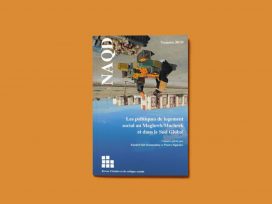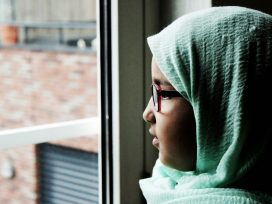By the time his father died in his childhood home in Papua New Guinea, Father Benedict (not his real name) had been a Jesuit priest for decades. News of the death travelled from the Carterets – a chain of beautiful coral atolls – to Bougainville, one of the main islands, where Father Benedict lives in a small community nestled in the lush tropical forests. Soon after, one of his relatives had a dream in which he said it was “revealed” that sorcery had been responsible for the death. Later, more “evidence” supporting this was found in the rainforest – a local youth had been caught engaging in what appeared to be ritual practices.
Father Benedict’s family members urged him to take action against the youth accused of having worked the sorcery, despite a hospital certificate stating that cancer was the cause. Consumed by grief, Father Benedict hesitated, struggling with real doubts as to what, or who, was to blame for his father’s death, and how to respond.
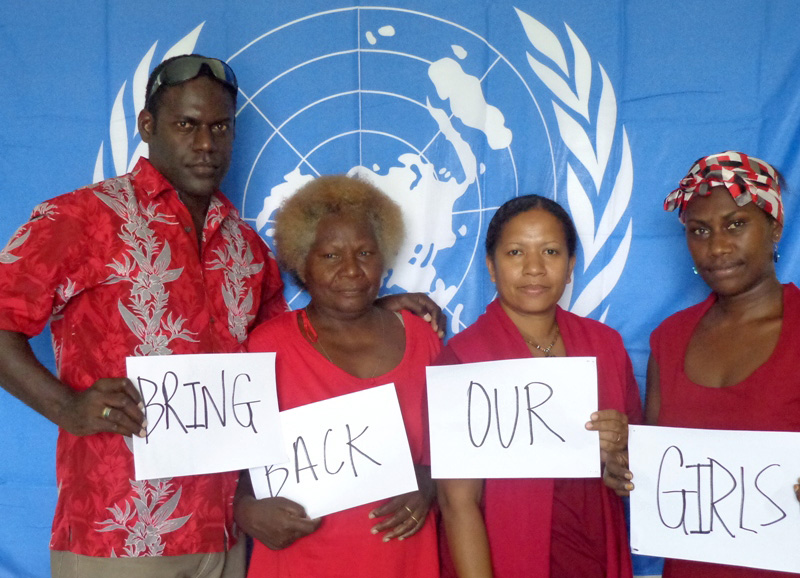
Photo by UN Women Papua New Guinea Sub-National Office, UN Bougainville from Flickr
According to the Witchcraft and Human Rights Information Network, there have been over 20,000 victims of accusations of witchcraft and related harmful practices over the last decade, spread across 60 countries. The research, published in November 2020, includes reports of over 5,250 murders, 60 disappearances in suspicious circumstances, and 14,700 attempted killings and physical attacks. While Papua New Guinea suffers disproportionately from the phenomenon, many parts of Africa and India also have high rates. Wealthier countries in the west are affected too. In 2019 the number of children known to have been abused in England as a result of beliefs in witchcraft and possession was reported to have risen by a third in two years, with almost 2,000 identified victims.
And this may be only the tip of the iceberg. Irrespective of where it takes place, these crimes are often hidden due to ignorance, shame and stigma, making comprehensive figures extremely difficult to generate. Emerging data, however, paint a disturbing picture of an ongoing, widespread and systemic form of violence that takes many different forms, depending on the part of the world. Alongside murders and physical attacks, there are also cases of grave desecrations and human trafficking. Women trafficked for witchcraft purposes are often silenced through being forced to take a ritual oath. They believe that breaking the oath by, for example, alerting the police will subject them and their families to revenge from the spirit world.
In July, the significance of this complex and global issue was finally officially recognised in an historical resolution by the United Nations Human Rights Council. The UNHRC emphatically condemned harmful practices related to accusations of witchcraft and ritual attacks that result in human rights violations. Will the phenomenon finally garner the attention needed to tackle it on the ground? How can we help stop sorcery accusation-related violence – or SARV, as it is often called?
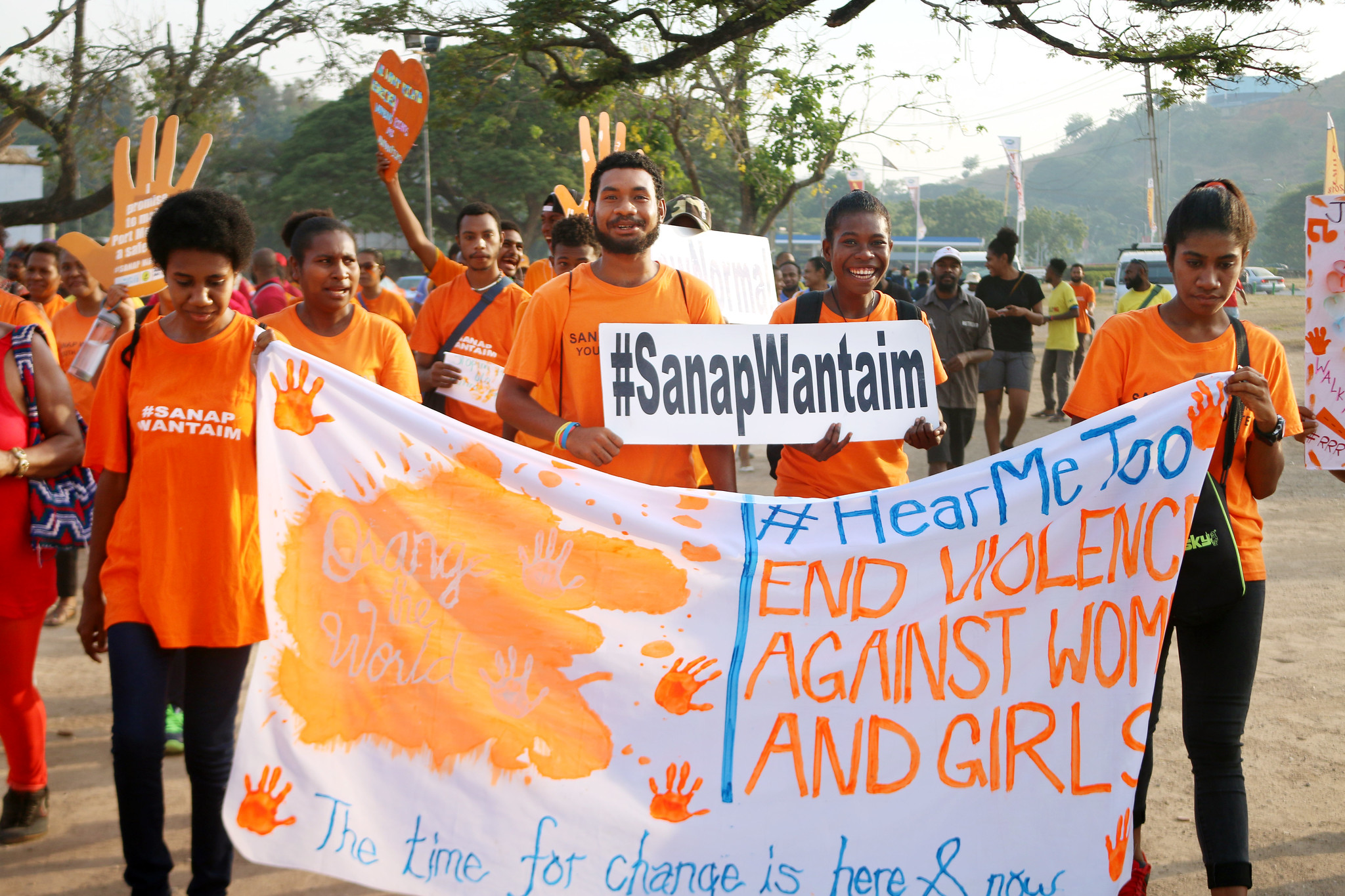
Groups gather in Papua New Guinea to mark 16 Days of Activism Against Gender-Based Violence. Photo by UN Women via Flickr
I’m part of a research team working to tackle SARV in Papua New Guinea. We estimate that, nationally, six people are killed every month, and a further 23 suffer serious harm, including permanent injury. Our team comprises academics from the PNG National Research Institute and the Divine Word University in Madang, working with a network of local activists. We are a disparate group, including film makers, gender specialists and Catholic priests. It’s important for us to work alongside people of the Catholic faith, as this is the largest religious group in Papua New Guinea, comprising roughly 26 per cent of the population.
Our investigation has documented systemic and ongoing fear, violence and death resulting from accusations of sorcery in the country. Almost every accusation leads to ongoing shame and stigma and increased likelihood of future accusations. In almost a third of the cases documented it has led to physical violence or property damage. This violence is often very public. It involves acts of torture, such as burning with heated machetes, that are often carried out over many days, if not weeks, and that literally take place within the public square.
I’ve sat in boats and on the back of trucks and under trees hearing people’s stories about the impact these accusations have had on their lives. Heartbreakingly, one survivor demanded I tell her the secret to removing the “stain” of a sorcery accusation that followed her everywhere. Another silently showed me her scars with tears rolling down her cheeks. Many victims either cannot access support services or choose not to go to the police or hospital for fear of further reprisals. Impunity for these offences is widespread.
Yet accusations do not always have to lead to violent incidents. Let’s return for a moment to Father Benedict. When he heard the “evidence” of sorcery, he was thrown into doubt. After three days of prayer, he readied his mind and returned home to the Carterets. It was no easy journey to these islands, which are slowly sinking under the rising seas, requiring many transitions in and out of small boats. In many ways, his spiritual journey was even more arduous. “There was hatred and revenge from the members of our community, and pressure from them [to take revenge for his father’s death],” he said. “Early on, I was very angry too [about the possibility of sorcery] but I prayed about it and thought about what was the best way to settle it in a peaceful way, and I let time pass.”
After much reflection, Father Benedict publicly refuted the claims that the death was caused by sorcery, and buried his father with full Catholic rites. Drawing upon his spiritual leadership, he worked with the local chiefs and village court magistrates to reconcile with the youth who had been accused, blessing water as a symbol of cleansing from both sides, and ritually shaking hands. Violence was averted, relationships restored, amity returned to this small atoll chain.
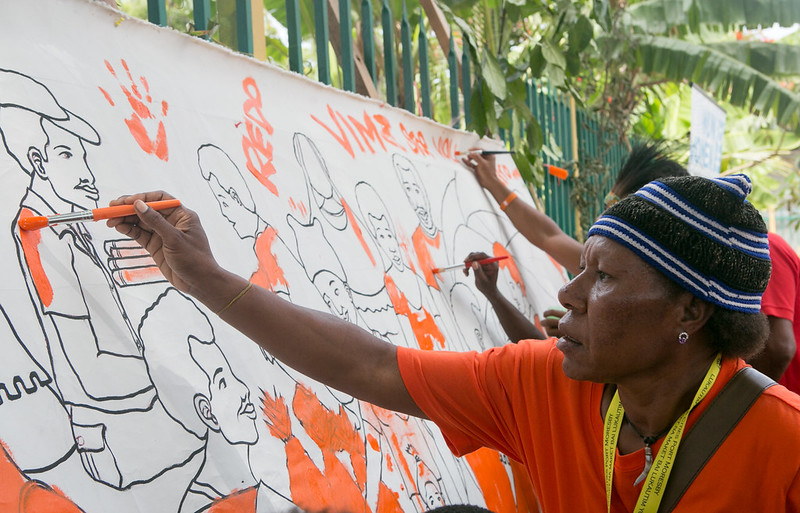
Photo by UN Women / Johaness Terra via Flickr
What can be done to help ensure more cases of sorcery accusation end in peace and reconciliation? A first step must be greater understanding. For example, the primary victims of witch-hunts are often assumed to be marginalised women, while there are in fact many classes of victim. In Papua New Guinea, women and girls are the main victims in the Highlands, while males are more likely to be accused in Bougainville. In some areas, it will be the “poisenman” who casts his sorcery through sprinkling substances into discarded hair or fingernails, while in others a “sanguma” (“witch”) woman is known to “eat” the heart of her victim. Like a virus, these narratives mutate to adapt to new conditions, as demonstrated in the growing number of stories of “sanguma” using mobile phones. While the poor and marginalised are often targeted, so are economic or political elites. Witchcraft accusations can be a very effective tool of the powerless, given the difficulty of mounting a defence against them.
What explains the prevalence of this trend in some places but not others? As would be expected, a major factor is the presence of a supernatural worldview, but this is by no means a complete explanation. In Vanuatu, a Melanesian archipelago where I used to live and work, sorcery would often be framed as an explanation for everything from unceasing rain to failures of court cases, but these apprehensions very rarely became personalised or violent. Socio-economic factors, including poverty, precarity, new forms of inequality and lack of trust in leaders and institutions, usually play a significant role.
Education in western science is of undoubted importance, but it must be understood as only one part of the solution. Our research with university students in Papua New Guinea supports psychological studies that identify the prevalence of what we term “worldview pluralism”. While many people understand the world principally through a frame based on scientific, religious or magical principles, it is also common for a number of these frames to coexist in a single individual. Even highly educated members of society do not completely replace one understanding of causality with another. They co-exist, with one emerging as dominant in a given context. In the case of Father Benedict, we saw him tussling with competing causal frameworks dictating different courses of action – a dilemma he finally resolved in favour of a peaceful approach rooted in his Catholic beliefs.
Our research found that one of the most effective strategies to divert accusations from turning violent was to raise doubt about whether sorcery had been used in that particular case. We call this a “doubtbased advocacy strategy”. Rather than seeking to convince others to reject a particular explanatory framework outright, the aim is to create or extenuate doubt about questions of causality.
Highlighting the potential negative consequences is another feature of this approach. One inspiring youth leader – a local man who has worked as a recorder on our research project – explained how he exercised leadership when his father died. His main motivation was to avoid the family and community fracturing that he had often seen following such accusations. “Even though I have a cultural belief in sorcery, I still can make decisions not to go down that road,” he said. “My brother and his family were pushing me to do something, but I stood strong on my principles.”
Often those best placed to nudge others away from dangerous stories about sorcery are people from within the group who may themselves have once had an ambivalent relationship to such narratives. These people can provide a bridge between different worldviews, through being an insider and “one of us”. It overcomes the familiar pushback: “Oh, but you just do not know about our sorcerers.”
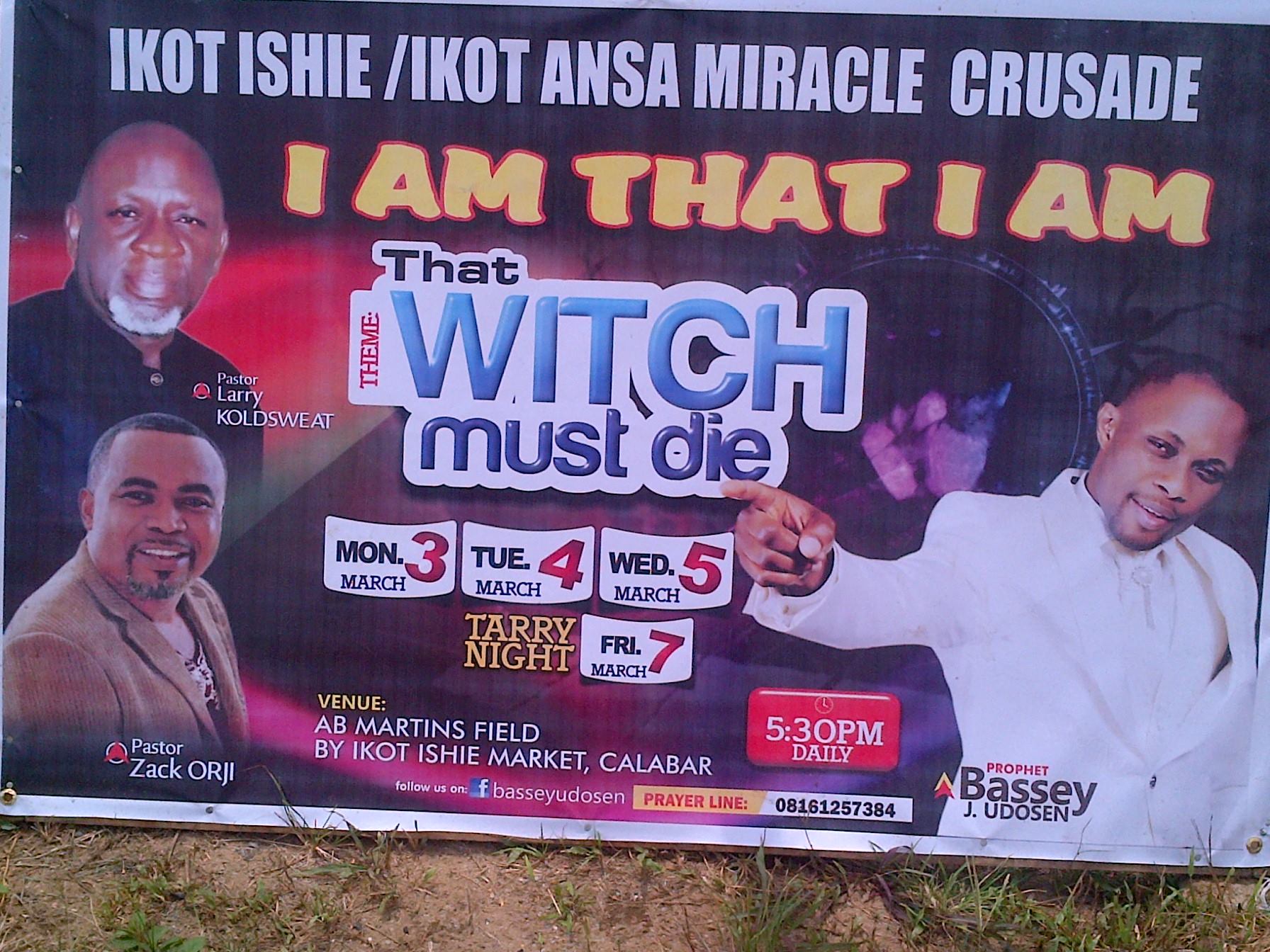
Photo via Witchcraft & Human Rights Information Network (WHRIN) on Facebook
The good news is that the phenomenon is garnering more attention, not only in Papua New Guinea but worldwide. One important step in facilitating such conversations is creating physical spaces in which they can be had, and developing terminology to frame them. In Papua New Guinea the term “sorcery accusation-related violence” has gained traction since 2013, following concerted attempts to mainstream the terminology by a network of officials, civil society and faith-based organisations. The UN Independent Expert on persons with albinism has spearheaded development of the terminology “harmful practices related to accusations of witchcraft and ritual attacks”. People with albinism have long been targets for those seeking to use their body parts in a range of ritual practices to overcome everything from male impotency to poverty, and know a thing or two about the dangers such beliefs can create.
This terminology seeks to emphasise the “harmful practices” rather than the beliefs themselves, recognising that in many contexts witchcraft and associated beliefs are valued by the majority of the population, particularly in regard to their use in traditional healing. We don’t have to share these views to acknowledge their importance when working with particular communities. In the United Kingdom, the term “child abuse linked to faith or belief ” has been developed and awareness is being raised around the issue.
Greater understanding of how to confront sorcery accusations and related violence is not only important in its own right. Frequently characterised by mob justice, competing understandings of causation of events, as well as high levels of fear and uncertainty, our insights into how to deal with this issue can help us develop strategies for tackling many different forms of violence across the globe.
What are my main takeaways from my years of research in this field? The most positive finding has been that when accusations are made, community leaders, family members and faith leaders often step in to intervene. They create spaces for dialogue, for airing different perspectives and for calming the panic and anger. A path is found through previously polarised positions. While ending impunity for those who commit violence is important, it is the exercise of leadership in families, communities and national government that is probably our best hope of advancing a non-violent future. This means creating spaces for respectful dialogue and encouraging communities to arrive at peaceful compromise.
As Father Benedict observed: “I came to an understanding that life has to continue. If they [the accusations] do not end they will continue to traumatise me. Because we are being imprisoned by what others think and what we think also . . . and so we just have to be flexible, let go and rest peacefully.”









